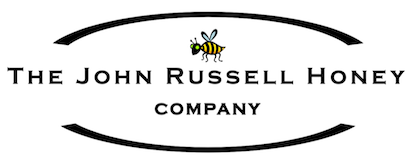April Fireside
April is here, and the official beekeeping calendar starts. Hives are scheduled to be moved out of indoor wintering sheds, and outdoors wintered colonies can be quickly inspected for emergency feeding, with the dead pulled aside for cleaning out and sorting. Now nature doesn't believe in calendars, but this is the apiarists rule of thumb. We keep a very close eye on the weather, because even if the temperatures reach only 3 degrees, if there is no wind and full sun we can (quickly!) open the top of the hive to check resources and population numbers.
One of the common questions I'm asked is if I feed my bees sugar.
Let's take a look at why this question is asked before I respond. White sugar is considered a bad food by most of us. Honey can also be adulterated with sugar syrup. One of the ways nefarious beekeepers do this is by feeding sugar syrup when the honey supers are on the colony is split between Brood Chamber(s) and Honey Supers. They look identical from the outside, but there is a "queen screen" between the two section to confine Her Majesty to laying her eggs in the brood chamber leaving the honey duper strictly for nectar storage and honey production. When there are no honey supers on the colony, you can feed your bees and medicate your bees without any risk of your honey becoming adulterated or contaminated.
So, in the spring when there are no plants that can provide enough of a surplus to warrant a honey super being on the hive, I can and have fed the bees sugar syrup if it was an emergency situation and they were at risk of starvation. My typical method of feeding bees however is by holding back frames of honey from congested brood chambers in the late spring season, or the remains of colonies that dies out due to queen failure and freezing them for when they are needed. However there are times when that method will not save a colony and sucrose syrup is employed.
Feeding bees in the fall with sugar syrup is a fairly common practice in the fall. The honey supers are off of the colonies, and beekeepers are providing this artificial nectar flow so the bees can backfill the brood chambers with resources as the queen slows he egg production down. There are many peer reviewed studies from researchers I respect that indicate that sugar syrup assists in preventing winter loses as it has no solids like ash or minerals that accumulate in the bees gut over winter, relieving the stress of the need to defecate. there is a nutritional component trade off however and I prefer my bees eating what nature evolved them to do.
However there are many beekeepers who would gladly debate me about this, so I don't claim to be the high authority on the topic. I do however know what works for me, and continue to do it.
As the days grow longer after the solstice, the queen ramps up egg laying to build the hives population to be poised for readiness when flight is possible and the first blooms of spring appear. A single brood chamber contains up to 63000 cells. A good percentage contain honey and pollen, but that still would leave up to 25000 cells for the queen to lay eggs in. Each egg laid that is developed to a hatched out honey bee takes one cell of resources. In peak seasonal conditions the queen can lay a 1000 eggs in a 24 hour period. Explosive population building is something they are very good at achieving, and the beekeeper needs to be vigilant in ensuring they do not run out of resources before there are ample blooms available, and that they are have adequate room to lay eggs at the pace they have established to prevent swarming impulses. This can be tricky to get the hang of, but the more you understand bee behavior the easier it is to anticipate their actions and reactions.
At the moment it's sunny and minus 7 Celsius, so I'm in the "hurry up and wait phase" The next newsletter will have an update on how the bees fares though this winter, and we can clock their progress on how they are growing their populations in anticipation for the honey flow.
Until next time,
Take care!
